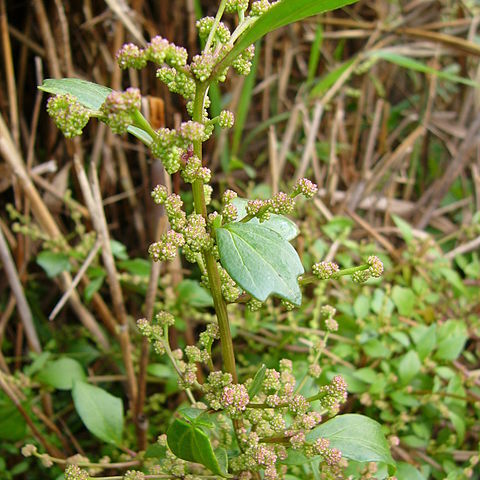Stems erect to prostrate, much-branched, 0.1-3.5 dm, glabrous. Leaves nonaromatic; petiole to 0.28 cm; blade deltate or narrowly deltate, 0.8-6 × 0.2-3.5 cm, base cuneate, margins entire or broadly dentate, apex acute to obtuse. Inflorescences lateral glomerules sessile on lateral branched spikes; glomerules subglobose, 3-4 mm diam.; bracts oblanceolate to linear, 0.2-1.5 cm. Flowers: perianth segments 3, connate almost to apex into 0.5-0.8 mm tube; lobes deltate, 0.1-0.5 × 0.3-0.4 mm, membranous, apex acute, flat or occasionally keeled-corniculate, glabrous, green and covering fruit at maturity; stamen 1; stigmas 2, 0.2 mm. Utricles ovoid; pericarp nonadherent, reticulate-punctate. Seeds vertical and horizontal, ovoid, 0.6-0.9 mm diam., margins rounded; seed coat black, smooth.
A herb. It grows 20-50 cm tall. The leaves are broadly triangle shaped and 3-4 cm across.

